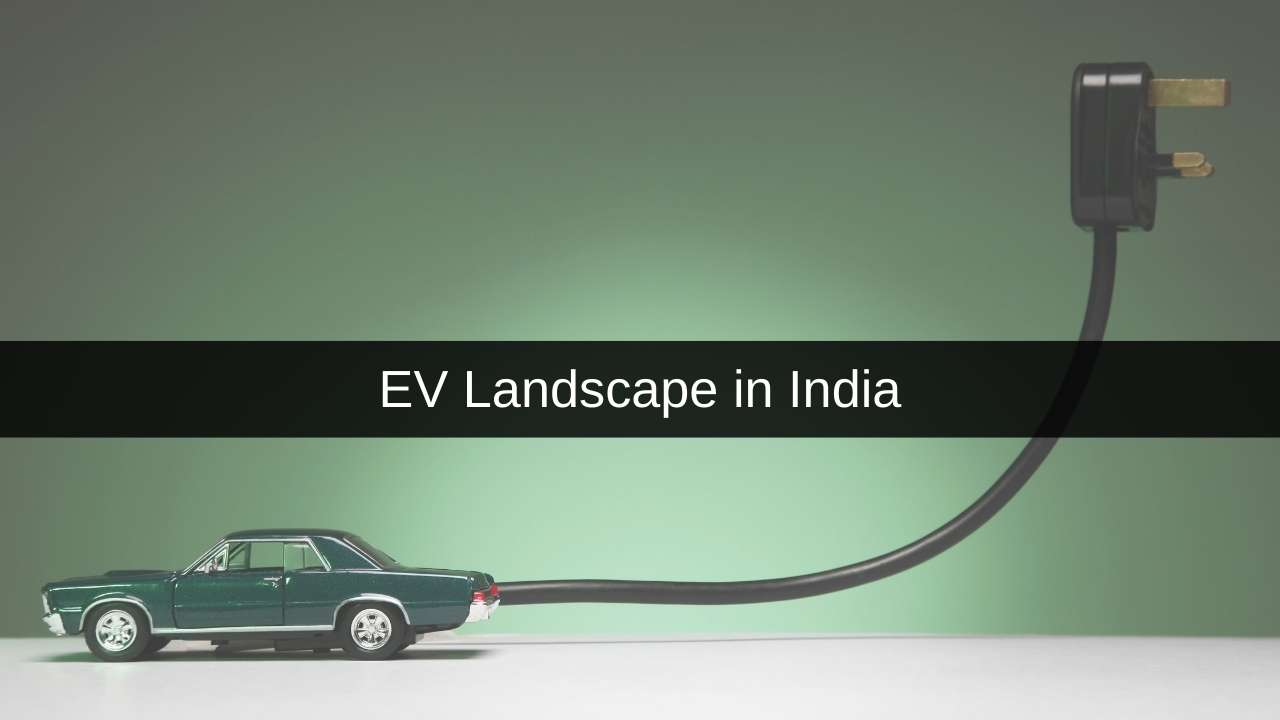Market Prediction For Tomorrow 27 March 2025
EV Landscape in India

With a population of over a 1.4Billion, India imports approximately 84% of its crude oil needs, making it the 3rd largest oil consumer and imports in the world. With a marked increase in oil prices, an increase in imports, and a decline in domestic oil production, India’s crude oil import bills are rising. India is set to cross the $100Billion mark in oil imports in the current fiscal, with an expenditure of $94.3Billion from April 2021 to Jan 2022.
At COP21, India pledged to reduce its carbon footprint by 33-35% by 2030. To achieve its target, India would have to shift its power generation towards renewable sources of energy, and distance itself from fossil fuel-based transportation. The exponential rise in automobile adoption in the country in the past decade has witnessed the Indian transport sector become the third-largest user of oil worldwide, with road transportation contributing 80% of the consumption.
Even though avenues for clean mobility are gaining momentum in India, still there is a visible need for large-scale adoption to make a considerable impact on savings in import bills, reduction of GHG emissions, and energy security for the future. EVs have emerged as a promising alternative that could help drastically reduce the adverse environmental impacts caused by conventional vehicles.
The government of India’s National Electric Mobility Mission Plan 2020, which seeks to enhance national energy security, alleviate adverse environmental impacts from road transport vehicles and boost domestic manufacturing capabilities for EVs, is a step in the right direction.
Several state governments have introduced EV-specific policies, intending to provide both supply-side and demand-side incentives to attract investment and generate employment in their respective states. Incentives offered often include capital interest subsidy, stamp duty reimbursements, tax exemptions, SGST reimbursement, and the provision of interest-free loans to incentivize EV manufacturers.
Over the past few years, the Indian EV industry has witnessed rapid growth. In FY21, registered EV sales stood at 236,802 with the e-2W segment accounting for over 60% of the market. However, the low-speed segment accounted for a massive 71% share of the e-2W sales. With the growth of e-commerce, the e-3W (Cargo) segment is on the rise accounting for ~12% share in the e-3W market as compared to ~4% in FY20. The e-bus and e-4W segments have also witnessed a triple-digit increase in sales with a low baseline.
While the rising fuel prices are resulting in a shift towards EVs, especially for the lighter vehicle segments, this is to be accompanied by adequate charging infrastructure to support the ecosystem. As of March 2022, India has a total of 1,742 operational public EV chargers, of which 9 cities – Surat, Pune, Ahmedabad, Bengaluru, Hyderabad, Delhi, Kolkata, Mumbai, and Chennai – account for >50%12. The implementation of GoI initiatives such as affordable EV tariffs, residential charging, technical standards, revenue sharing models, and a rapid increase in charging infrastructure by OMCs, becomes vital for India to support the growth in EVs.
EV Battery Ecosystem in India:
The battery ecosystem consists of various stages critical for the batteries to be used for automotive applications. From the sourcing of minerals to packing the active materials into the cell to recycling the used batteries, the battery eco-system has an integrated supply chain.
India participates in certain stages of the ecosystem due to the increasing applications of EVs. Currently, manufactured cells are imported from China, Japan, and South Korea and assembled into modules and battery packs. This has led to higher costs of batteries and a consequential increase in EV prices in India and keeps India exposed to the volatility of the global supply chain.
India has a local eco-system for sub-components of battery packs including battery pack housing and BMS systems, however, lower volume and lack of standardization have led to an increase in the cost of such components. However, the Govt. of India has taken several steps in building domestic battery manufacturing capability for the future.
Cell Chemistry: Roadmap for India
One of the most critical components of an EV is the battery pack and its cells. Within the cell, cathode chemistry plays an important role in deciding the performance of the battery pack. There are multiple cell chemistries that are being researched and explored for battery manufacturing, however, NMC and LFP cell chemistries have witnessed the highest adoption for EV application. These lithium-based cell chemistries have higher adoption due to matured technology and production processes to meet cost economics for vehicle applications.
But these lithium-based cell chemistries have significant challenges in the long term due to supply-side constraints, high energy consumption, and environmental concerns raised during the mining and processing of active cathode materials. However intensive research on multiple chemistries need to be undertaken to develop advanced cell chemistries for future requirement.
In the near term, to meet the immediate demand for lithium-ion batteries, production should focus on lithium-based cell chemistries. However, within the lithium-ion cell chemistries, the focus should be on LFP chemistry over the NMC categories as India has challenges in supply chain and environmental conditions for NMC chemistry.
In the long-term, Indian cell manufacturers should focus on more advanced cell chemistries including metal-air batteries, sodium-ion batteries, and solid-state batteries. These technologies are currently being tested and would take some development cycles before they are commercially viable. For example, one of the world’s leading cell manufacturers announced an advancement in Sodium-ion cells and expects to have commercial deployment soon, these second-generation cells are expected to have an energy density of 200 Wh/kg which is similar to that provided by LFP cells.
EV Manufacturing Ecosystem:
The automotive industry contributes up to 7.1% of India’s GDP which includes vehicle manufacturing, auto component manufacturing, and dealer distribution. With the global and domestic automotive industry transitioning from ICE vehicles to EVs the industry could be at risk of reducing employment opportunities and GDP contribution, therefore, setting- up local EV manufacturing and supporting supply chains should be of strategic importance to India. Since the launch of the FAME scheme which incentivized the adoption of EVs, India has witnessed an increase in domestic manufacturing of EVs. Policies focusing on localization and an increase in import duty for CBUs lead to automotive players setting up local assembly lines in India. Lower production volumes and lack of technology and manufacturing capabilities for major components led to OEMs relying in components being imported.
Till 31st July 2021, there were about 380 organized EV manufacturers in India. With the increasing adoption of EVs in the landscape, this number is only expected to increase further. Increasing adoption and localization of value-add conditions will require OEMs to invest in setting up additional design and manufacturing capacities. Major OEMs in the country have announced fresh investments for EV manufacturing as part of the automotive PLI scheme.
With increasing production capacities and the number of platforms for each OEM, vehicle manufacturers will have to focus on strategies that improve vehicle efficiency and the range of vehicle, reduce the overall cost of the vehicle and increase profitability for EV manufacturing.
OEMs will require to address existing gaps and challenges to meet the strategic goals which will require OEMs to focus on the following areas.
Indian auto component players can leverage the EV opportunity to safeguard and grow in important export markets. As per ACMA Indian auto component industry derives 29%20 of its revenues from the global market with Europe and North America accounting for 62% of exports from India.
These markets would undergo significant development/modification with electrification, hence, the industry must be future-ready and take a closer look at the opportunities presented by electrification. This is to retain and also expand its share in the global market that has supported the industry during domestic downturns.
Many segments of the ICE auto component industry can be carried forward to EVs with some modification, while many other capabilities can be leveraged to enter the EV-specific segment with new products. Further, with relatively low entry barriers in the EV industry, many component manufacturers are finding it easier to move up the value chain.
With new components and technologies driving EVs (Cells, Powertrain & Electronics, Telematics, etc.), various OEM - supplier engagement models are emerging with a higher degree of collaboration over the traditional transactional approach. Besides existing parameters of cost, time, and quality; other parameters such as technology strength, R&D capabilities, development, and design validation, lifetime ownership of component performance, level of value chain integration, etc. will gain more importance.
- Performance Analysis
- Nifty Predictions
- Market Trends
- Insights on Market
Trending on 5paisa
Market Outlook Related Articles
Disclaimer: Investment in securities market are subject to market risks, read all the related documents carefully before investing. For detailed disclaimer please Click here.

 5paisa Research Team
5paisa Research Team




